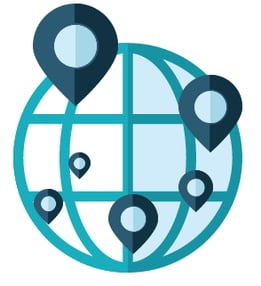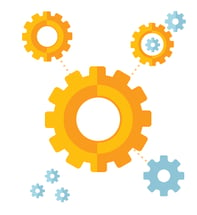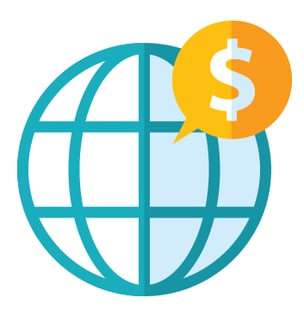
 Researchers usually undermine hype. Yet, recent studies weighing the potential impact of the Internet of Things (IoT) are consistently feeding the excitement.
Researchers usually undermine hype. Yet, recent studies weighing the potential impact of the Internet of Things (IoT) are consistently feeding the excitement.
Before we get into the numbers — and there are many to share — here’s a quick primer on what we mean when we say Internet of Things.
The Internet of Things refers to physical devices that offer smart features through connectivity. The implications are greater monitoring, control, optimization and automation. The billions of IoT devices today ranges from light bulbs that change color or intensity in response to your whims or soil irrigation sensors sending radio frequency signals to farmers miles away from their crops.
In a shift often likened to the Industrial Revolution, a drop in the price of sensors and processors and greater networking capabilities alongside widespread WiFi access have enabled expansive growth in the IoT arena.
Now, with that understood, consider some of the many jaw-dropping statistics about IoT.
 Cisco’s Trend Report estimates there will be 50 billion devices connected to the Internet by 2020 (compared to 15 billion today). Gartner Inc. is less bearish with its estimate of just 20.8 billion connected devices, while a BI Intelligence report rides in the middle predicting 34 billion connected devices by 2020.
Cisco’s Trend Report estimates there will be 50 billion devices connected to the Internet by 2020 (compared to 15 billion today). Gartner Inc. is less bearish with its estimate of just 20.8 billion connected devices, while a BI Intelligence report rides in the middle predicting 34 billion connected devices by 2020.
Consulting company McKinsey Global suggests the market for IoT components could exceed 30 percent a year through 2025 (having grown 160 percent in 2013 and 2014). Gartner also forecasts 6.4 billion new connected things will be in use in 2016.
 International Data Corporation has predicted a 17.0% compound annual growth rate (CAGR) in IoT spending from $698.6 billion in 2015 to nearly $1.3 trillion in 2019.
International Data Corporation has predicted a 17.0% compound annual growth rate (CAGR) in IoT spending from $698.6 billion in 2015 to nearly $1.3 trillion in 2019.
Cisco specifically suggests IoT will generate $8 trillion worldwide from innovation and revenue ($2.1 trillion); asset utilization ($2.1 trillion); supply chain and logistics ($1.9 trillion); employee productivity improvements ($1.2 trillion); and enhanced customer and citizen experience ($700 billion).
Similarly, McKinsey forecasts an economic impact of as much as $11.1 trillion per year in 2025 with its analysis of IoT applications in nine settings (see Figure 1).
IDC, in particular, in its “Look Ahead at the Internet of Things,” identifies manufacturing, consumer, transportation, and retail as the main segments for IoT growth through 2020.
Putting IoT in personal terms, let's look at the strong growth in the wearable device market. According to IDC’s Worldwide Quarterly Wearable Device Tracker, 111.1 million wearable device units will ship in 2016, up a strong 44.4% from 2015. The growth in this area will reach 28% over four years for a total 2019 shipment rate of 214.6 million units.
According to researcher VisionMobile's IoT Megatrends 2016 report, 4.5 million developers are working on IoT applications.
IDC Analysts forecast a growth in IoT solutions market value from $1.9 trillion in 2013 to $7.1 trillion in 2020.
Business Insider also predicts $6 trillion will be spent on IoT solutions over the next five years as businesses value the IoT’s lower operating costs, increased productivity, and help in expanding into new markets or developing new products.
Related article: Marketing Opportunities for the Internet of Things
Meanwhile, IT staffing firm TEKsystems asked more than 200 business and IT leaders how they anticipate the IoT to impact their businesses in the next five-year planning horizon. The respondents expected the IoT to:
Despite this optimism regarding the IoT’s impact, many businesses are not feeling ready for this technological shift. A recent World Economic Forum survey examining the potential of connected products and services found that 88 percent of respondents were overwhelmed by the IoT’s impacts on their underlying business models and long-term implications.
Sources and references:
by Jonathan Franchell, CEO of Ironpaper - For more tips and hacks: Need to remove a new line after h1 tags? Both web designers and SEO practitioners need to employ headline tags: H1, H2, H3 in several ways to improve web page structure and tag...

The Crowded Arena of the IT Marketplace Updated December 2024 The Information Technology (IT) landscape is experiencing rapid growth and intensifying competition. IT spending is projected to reach nearly 5.1 trillion U.S. dollars in 2024, a...

Updated December, 2024 The field of digital marketing is evolving rapidly in response to new technology and changing buyer expectations. To help career-minded marketers, we’ve rounded up the top 10 skills needed to succeed in the field. These are...

The marketing industry is transforming significantly due to generative AI and increasing market complexity. Gartner's prediction of a 25% decline in traditional search traffic suggests that the era of search engines is dying. AI tools, particularly...
